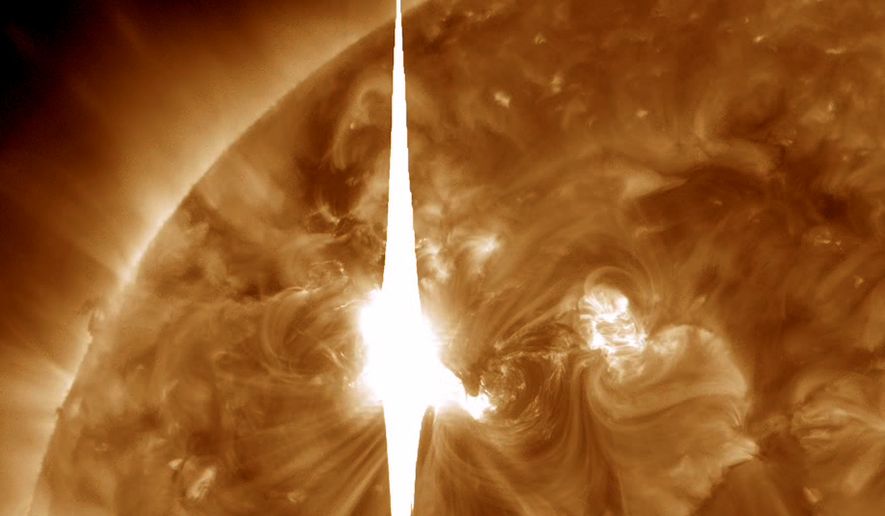A team of European researchers unveiled last week a scientific model showing that the Earth is likely to experience a “mini ice age” from 2030 to 2040 as a result of decreased solar activity.
In a presentation at the National Astronomy Meeting 2015 in Wales, Northumbria University professor Valentina Zharkova said discrepancies in the sun’s 11-year cycle can be explained more accurately with what she described as a “double dynamo” model.
Based on the model, she predicted the two magnetic waves will cancel each other out in about 2030, leading to a drop in sun spots and solar flares of about 60 percent.
Astronomy Now summed up the findings with the headline, “The two-hearted Sun beckons new ’mini ice-age,’” while a Daily [U.K.] Mail article said, “Scientists warn the sun will ’go to sleep’ in 2030.”
“In cycle 26, the two waves exactly mirror each other, peaking at the same time but in opposite hemispheres of the Sun. We predict that this will lead to the properties of a ’Maunder minimum,’” Ms. Zharkova said at the meeting, as reported by the Royal Astronomical Society.
The Maunder Minimum refers to the period from 1645 to 1715 in which temperatures dropped dramatically, contributing to what is known as the “Little Ice Age” that resulted in the freezing of the River Thames in southern England.
“Over the cycle, the waves fluctuate between the Sun’s northern and southern hemispheres. Combining both waves together and comparing to real data for the current solar cycle, we found that our predictions showed an accuracy of 97 percent,” said Ms. Zharkova.
Her research colleagues — Simon Shepherd of Bradford University, Helen Popova of Lomonosov Moscow State University and Sergei Zarkhov of the University of Hull — used magnetic field observations from 1976 to 2008 at the Wilcox Solar Observatory at Stanford University.
The National Astronomy Meeting, an annual event sponsored by the Royal Astronomical Society, was held July 5-9 in Llandudno, Wales.
“It is 172 years since a scientist first spotted that the Sun’s activity varies over a cycle lasting around 10 to 12 years. But every cycle is a little different and none of the models of causes to date have fully explained fluctuations,” said the Royal Astronomical Society in a press release.
“Many solar physicists have put the cause of the solar cycle down to a dynamo caused by convecting fluid deep within the Sun,” the release said. “Now, Zharkova and her colleagues have found that adding a second dynamo, close to the surface, completes the picture with surprising accuracy.”
The “double dynamo” theory lends credence to the work of researchers who argue that the Earth will soon experience a period of global cooling as a result of reductions in solar activity even as climate-change advocates argue that the planet is warming as a result of increased carbon dioxide in the atmosphere.
Former White House national space policy adviser John L. Casey makes the argument in “Dark Winter: How the Sun is Causing a 30-Year Cold Spell” (Humanix, 2014), forecasting a “solar hibernation” and “historic reduction in the energy output of the Sun.”
He warns that the worst of cooling cycle will hit in the late 2020s and early 2030s.
• Valerie Richardson can be reached at vrichardson@washingtontimes.com.




Please read our comment policy before commenting.